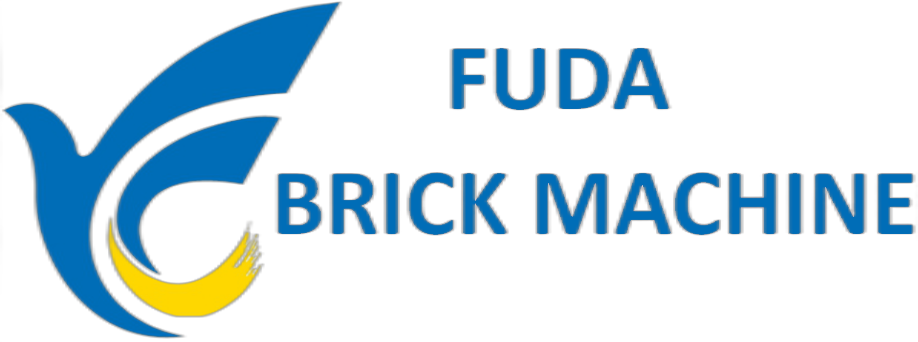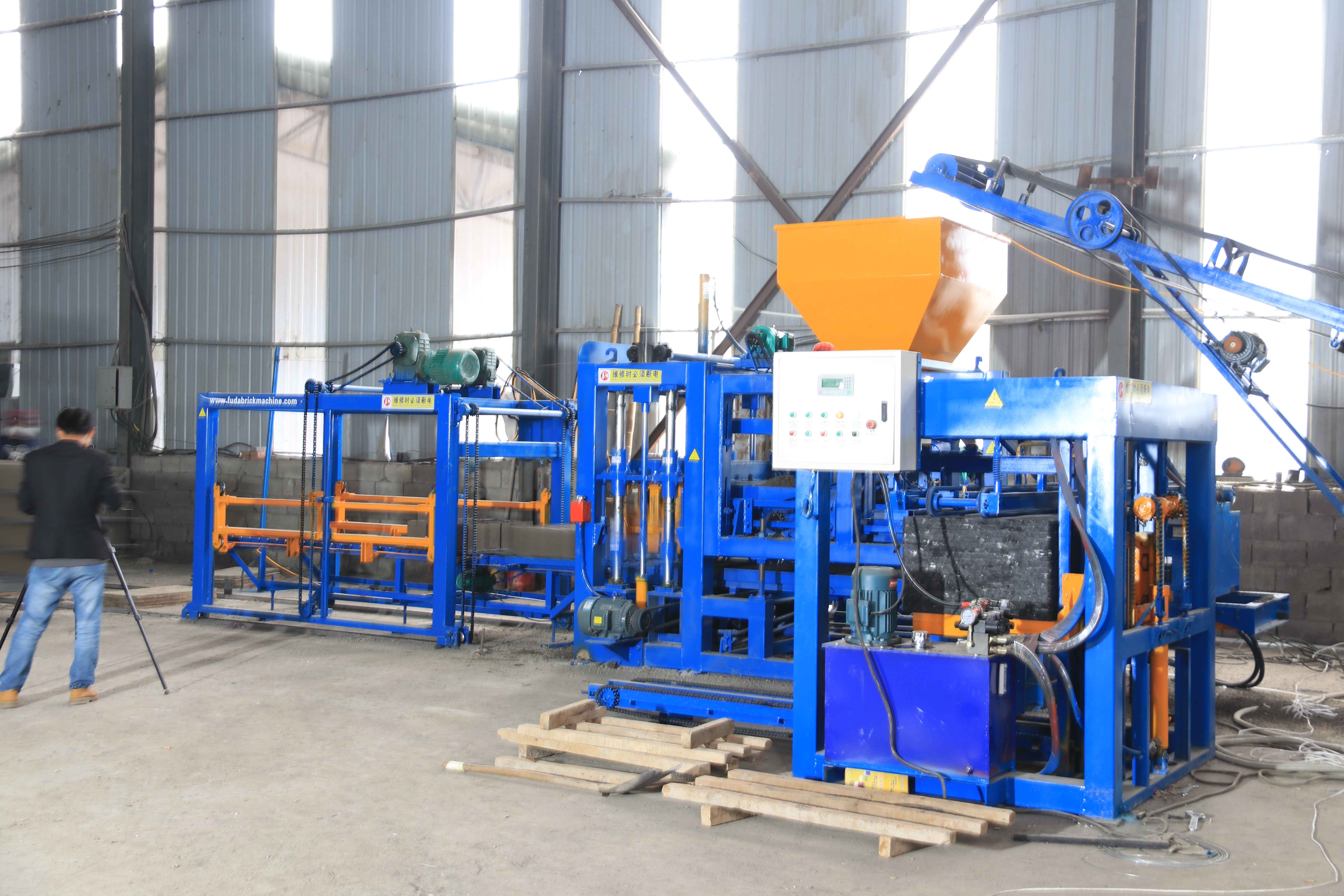Key Components of Semi Automatic Block Making Machines and Their Role in Ensuring Smooth Operation
Key Components of a Semi Automatic Block Making Machine: Hopper, Mold, Control Panel, and Conveyor
Semi automatic block making machines depend on about four main parts working together for smooth operation. First off, there's the hopper that takes in all those raw materials such as cement and aggregates. Getting this aligned right is super important otherwise things tend to get backed up and cause headaches down the line. Beneath the hopper sits the mold where actual block shaping happens through hydraulic pressure. Even tiny mistakes here matter big time - we're talking around 2mm differences can throw off dimensions completely. People who run these machines spend quite a bit of time fiddling with control panels adjusting everything from cycle times to pressure levels. Meanwhile, the conveyor belt keeps moving finished blocks along without messing up the whole production flow. When something goes wrong with any component, problems multiply fast. According to some research folks looked at last year, roughly one out of every five unexpected shutdowns in block factories comes down to conveyor belts not syncing properly with other parts of the system.
The Role of Each Component in Ensuring Reliable Performance
Each component operates interdependently:
- The hopper's vibration system ensures consistent material flow to prevent air pockets
- Mold temperature and lubrication directly impact block surface finish and demolding efficiency
- Control panel settings govern compression cycles, with over-pressurization reducing mold lifespan by 40%
- Conveyor belt speed must match production output to avoid block collisions
Sensor-driven calibration of these systems can boost productivity by 18%, according to industrial automation research.
How Misunderstanding Machine Layout Leads to Operational Errors
When operators don't pay attention to how components relate to each other, they end up creating all sorts of avoidable problems down the line. Take conveyor placement for instance. Put it too near the mold and nobody can get close enough to do proper maintenance work. Move the control panel out of easy reach? That just means constant stopping and starting throughout shifts. Good plant layouts stick to what we call the efficiency sweet spot. If the hopper, mold area, and controls fall within about a 120-degree angle from where operators stand most of the time, studies show setup mistakes drop around 31 percent. Most manufacturers publish their own ergonomic recommendations anyway, so it makes sense to check those before finalizing any installation plans.
Skipping Essential Pre-Operation Checks and Safety Protocols
Essential Pre-Operation Safety Measures and Machine Inspection Routines
Before turning on a semi automatic block making machine, operators need to check several things first. The hydraulic pressure should be between 120 and 150 bar, all electrical connections properly secured, and the mold correctly aligned. There are some other important checks too. Look at those vibration motors for signs of wear or if they're running unevenly. Make sure emergency stops actually work when pressed, and that the conveyor belts stay on track during operation. Don't forget to clear out any debris stuck in the hopper feed area either. According to recent research from 2023 on equipment maintenance practices, facilities that stick to standardized checklists instead of random spot checks see around 38% fewer unexpected breakdowns. That kind of consistency really pays off in terms of keeping production running smoothly day after day.
Common Oversights in Daily Inspections That Trigger Breakdowns
Neglecting conveyor chain tension is the most frequent inspection lapse, leading to 27% of material jams reported by manufacturers. Other overlooked issues include gradual wear on mold liners affecting block dimensions, loose fasteners in vibration platforms causing uneven compaction, and hydraulic oil contamination from improper filter changes.
Data Insight: 43% of Failures Linked to Inadequate Startup Procedures (Industry Survey, 2023)
The International Construction Materials Association attributes nearly half of machine failures to rushed startups that bypass calibration steps. Machines receiving full pre-operation checks demonstrate:
| Inspection Completion Rate | Defect Rate Reduction | Production Uptime Improvement |
|---|---|---|
| 90–100% | 52% | 31% |
| 70–89% | 28% | 17% |
| <70% | 9% | 4% |
Manufacturers emphasizing structured safety protocols report 22% fewer workplace incidents and 19% higher daily output consistency.
Incorrect Calibration and Setup Leading to Quality Defects
Proper Initial Setup and Calibration of Molds and Pressure Settings
Precise alignment of molds and hydraulic pressure calibration determine block structural integrity. Operators must establish baseline vibration duration (12–15 seconds) and compression force (1,200–1,500 PSI), ensuring mold surfaces remain parallel within 0.3mm tolerance. Field data shows 67% of curing cracks originate from uneven pressure distribution during this phase.
Impact of Poor Calibration on Block Dimensional Accuracy and Strength
Deviations exceeding 2mm in block dimensions reduce wall load capacity by 18–22%, while under-compacted cores fail moisture resistance tests three times faster. A 2023 materials study revealed improperly calibrated machines produce blocks with 25% lower compressive strength than industry standards (7.5N/mm² vs 10N/mm²).
Best Practices from Industry Leaders for Consistent Semi Automatic Block Making Machine Output
Top manufacturers implement parameter verification systems that cross-reference production data against these benchmarks:
| Calibration Check | Frequency | Tolerance Range | Measurement Tool |
|---|---|---|---|
| Mold Alignment | Daily | ±0.5mm | Laser Level |
| Hydraulic Pressure | Weekly | ±75 PSI | Digital Gauge |
| Vibration Plate Gap | Monthly | 0.1–0.3mm | Feeler Gauge |
This protocol reduces dimensional rejects by 89% and improves batch consistency across production shifts.
Material Feeding Errors and Improper Mix Ratios Affecting Block Quality
Loading Raw Materials with Correct Proportions and Mixing Procedures
Getting the materials right at the start is what makes good quality blocks possible. Most experts in the field suggest sticking to certain standards when it comes to checking aggregates, measuring moisture content, and getting those cement to sand ratios just right. These days, many operations insist on digital checks for batch weights before anything goes into the hopper. Why? Because people tend to mess up their estimates quite often actually accounting for about two thirds of all problems during setup time according to Block Production Journal from last year. And interestingly enough, factories that have gone fully automatic with their proportioning systems manage to cut down on wasted materials by around 18 percent over traditional methods. A recent 2023 report looking at how consistent mixes should be backs this up pretty solidly.
Consequences of Inconsistent Mixes on Durability and Structural Integrity
Variations exceeding 5% in water content or aggregate size directly compromise block compressive strength. Suboptimal mixes lead to visible defects like surface crazing and reduced load-bearing capacity—critical failures in construction applications. Moisture imbalance alone can decrease frost resistance by 40%, significantly shortening product lifespans in harsh climates.
Field Data: 30% of Defective Blocks Caused by Poor Mix Consistency
Recent quality audits reveal that nearly 1 in 3 rejected blocks stem from improper material preparation. The most frequent offenders include undetected aggregate contamination (12% of defects), inconsistent cement hydration levels (9%), and uncalibrated feeder systems delivering uneven batches (6%).
Strategies for Standardizing Mixing Processes Across Production Shifts
Top manufacturers implement cross-shift verification checklists and real-time moisture sensors to maintain mix integrity. A best-practice guide from material handling experts advocates for quarterly operator recertification on proportioning equipment. Plants adopting automated mix-log systems report 22% fewer quality incidents, with standardized digital records enabling precise troubleshooting across all production phases.
Inadequate Compaction, Maintenance, and Shutdown Practices
Ensuring Sufficient Compaction and Monitoring Pressure for Uniform Blocks
Achieving uniform block density requires precise compaction force adjustments and real-time pressure monitoring. Operators must verify hydraulic pressure systems align with material specifications—sand-heavy mixes demand higher compaction than aggregate blends. A 2023 study found blocks with inconsistent density fail compressive strength tests 27% faster than properly compacted units.
Post-Production Cleaning and Proper Shutdown to Prevent Downtime
Residual concrete in molds or hoppers hardens into obstructions that reduce production speeds by up to 15%. Post-shift protocols should include dry-ice blasting to remove buildup from mold cavities, draining moisture from hydraulic lines to prevent corrosion, and confirming conveyor belts are debris-free before shutdown.
Routine Maintenance: Lubrication, Part Replacement, and Log Tracking
Wear-prone components like vibrator motors and mold liners require scheduled lubrication and replacement. Leading manufacturers recommend greasing bearings every 500 cycles and inspecting mold alignment weekly. Maintenance logs tracking part replacements reduce unexpected downtime by 38% (Reliable Plant, 2023).
Safety Procedures During Operation and Maintenance of Semi Automatic Block Making Machine
Lockout-tagout (LOTO) protocols must precede any mold adjustments or electrical repairs. OSHA-compliant facilities report 62% fewer workplace injuries by enforcing mandatory PPE (gloves, safety glasses, steel-toe boots), depressurizing pressure systems before accessing hydraulic components, and requiring dual-operator verification for high-voltage panel maintenance.
Frequently Asked Questions (FAQ)
What is the role of the hopper in a semi automatic block making machine?
The hopper takes in raw materials such as cement and aggregates and ensures their proper alignment to prevent interruptions in the workflow.
Why is pre-operation checking important for block making machines?
Pre-operation checks are essential to ensure everything, from hydraulic pressure to electrical connections, is appropriately aligned, significantly reducing unexpected breakdowns.
How does improper material mix affect block quality?
Inconsistent material mixes can compromise block compressive strength, lead to visible defects, and shorten the product lifespan, especially in harsh climates.
Table of Contents
- Key Components of Semi Automatic Block Making Machines and Their Role in Ensuring Smooth Operation
- Skipping Essential Pre-Operation Checks and Safety Protocols
- Incorrect Calibration and Setup Leading to Quality Defects
- Material Feeding Errors and Improper Mix Ratios Affecting Block Quality
- Inadequate Compaction, Maintenance, and Shutdown Practices
- Frequently Asked Questions (FAQ)

